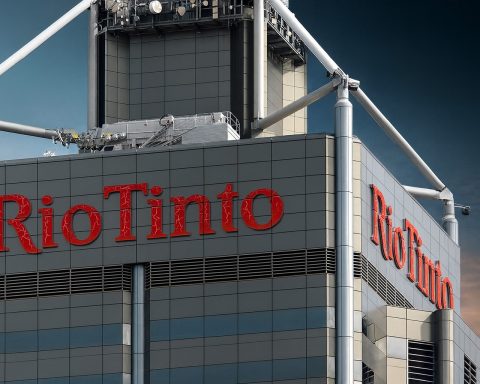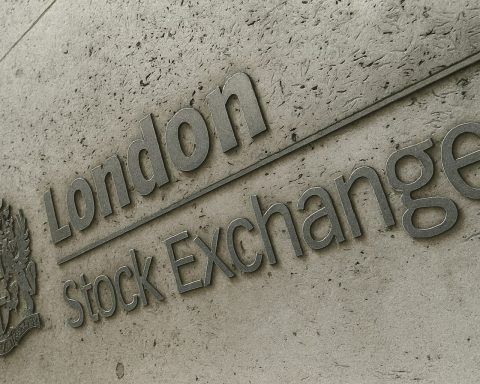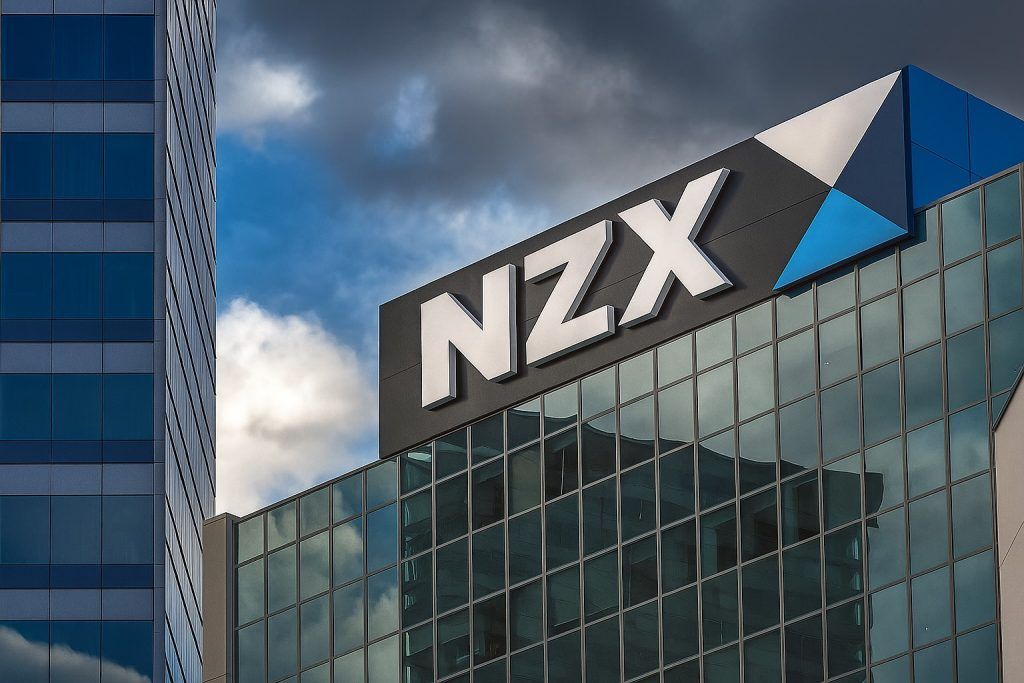TOKYO – Japan’s stock market swung sharply back into risk‑off mode on Friday, November 21, 2025, as global worries over an “AI bubble”, mixed U.S. data and growing policy uncertainty at home hit sentiment.
The Nikkei 225 closed at 48,677.50, down 1,146.44 points, or 2.30%, erasing much of Thursday’s powerful rebound and extending what is now one of its most volatile weeks since the spring. [1]
By contrast, the broader TOPIX index slipped just 0.06% to around 3,297.73, as gains in many domestic and defensive names offset the tech‑led slump that dragged on the Nikkei’s price‑weighted heavyweights. [2]
Nikkei 225 Tumbles While TOPIX Barely Budges
Friday’s session captured a familiar pattern for 2025: the tech‑ and export‑heavy Nikkei 225 bore the brunt of global risk aversion, while the broader market looked far more mixed.
- At the close in Tokyo, the Nikkei 225 was down 2.30%, according to Investing.com and other real‑time index providers. [3]
- TOPIX ended almost flat, slipping only a fraction of a percent even as index heavyweights sank. [4]
Market breadth on the Tokyo Stock Exchange told an even more nuanced story. Data from Investing.com show that advancing stocks outnumbered decliners by roughly 2,500 to 1,100, with about 190 issues unchanged – a sign that Friday’s move was more about violent rotation out of AI‑linked and cyclicals than an across‑the‑board capitulation. [5]
The divergence reflects how price‑weighting in the Nikkei amplifies swings in a handful of high‑priced names. When those names sell off together, the headline index can look far worse than the broader market underneath.
AI Bubble Fears: From Nvidia Euphoria to Tech Rout
Today’s sell‑off in Tokyo didn’t happen in isolation. It followed a sharp reversal on Wall Street, where a mixed U.S. jobs report and renewed doubts about inflated tech valuations triggered the Nasdaq’s biggest one‑day swing since April. [6]
Key global drivers feeding into Tokyo:
- AI valuation jitters: After blockbuster earnings from Nvidia briefly reignited global enthusiasm for artificial‑intelligence plays, investors are now questioning whether spending on data‑centre chips and AI infrastructure has run too far, too fast. [7]
- Unclear Fed path: The latest U.S. employment figures showed strong job growth but a rise in unemployment and downward revisions to earlier data, leaving traders unsure about the odds of a December rate cut. U.S. Treasury yields fell, but not enough to calm nerves. [8]
- Asia joins the risk‑off move: A Reuters markets wrap noted that MSCI’s Asia‑Pacific ex‑Japan index slid about 2.2%, with Japan’s Nikkei down roughly 2.2% and other regional tech hubs such as Taiwan and South Korea also posting steep losses. [9]
Regional coverage highlighted that tech was again at the epicentre. Channel NewsAsia reported that Asia’s semiconductor and AI‑linked stocks tumbled on Friday, with Japan’s Nikkei shedding more than 2% in morning trade as investors questioned whether AI‑related earnings can justify current valuations. [10]
For Tokyo, this meant a brutal session for the very names that had led the rally earlier this year: chip‑equipment makers, AI beneficiaries and high‑beta growth stocks.
Policy Cross‑Currents: Yen Intervention Talk and BoJ Hike Risk
Local macro dynamics added another layer of uncertainty for Japanese equities today.
In a separate statement on Friday, Japan’s government sharpened its warning on possible foreign‑exchange intervention as the yen stayed near multi‑month lows. Finance Minister Satsuki Katayama said authorities view FX intervention as a live option against “excessive volatility” in the yen, echoing language used ahead of past interventions. [11]
At the same time, Bank of Japan Governor Kazuo Ueda signalled that the central bank will debate the “feasibility and timing” of another rate hike at upcoming meetings, with markets now viewing the December policy meeting as a key inflection point. [12]
Key policy signals weighing on risk appetite:
- The yen is down about 6% this quarter, hovering around ¥157 per dollar, contributing to imported inflation and squeezing households even as it supports exporters. [13]
- Japan’s new prime minister, Sanae Takaichi, today pushed through a ¥21.3 trillion (about $135.5 billion) economic stimulus package, raising concerns about fiscal discipline and future bond issuance. [14]
- Longer‑dated Japanese government bond (JGB) yields, which earlier in the week spiked to multi‑decade highs, eased slightly after the package details suggested overall issuance may be lower than last year – but remain at levels not seen in around 17 years. [15]
For equity investors, this creates a tricky push‑and‑pull:
- A weak yen and large stimulus are supportive for corporate earnings, particularly exporters and domestically focused firms.
- But whispers of yen intervention and a possible BoJ rate hike raise the discount rate used to value future profits – a particular headwind for richly valued tech and growth names already under AI‑bubble scrutiny.
A Wild Week in Tokyo: From 3% Crash to Big Rebound and Back
Friday’s drop capped a roller‑coaster week for the Tokyo stock market:
- Tuesday, Nov 18: The Nikkei 225 plunged more than 3% to about 48,703, its steepest single‑day fall since April, as investors dumped tech and fretted over Japan’s fiscal outlook and surging bond yields. [16]
- Wednesday, Nov 19: Stocks extended their losing streak to a fourth day, with the Nikkei slipping another 0.34% to 48,537.70 and TOPIX down 0.17%, amid caution ahead of Nvidia’s earnings and continued weakness in chip‑related names. [17]
- Thursday, Nov 20: Tokyo staged a powerful rebound. Xinhua reported that the Nikkei surged 2.65% to 49,823.94, while TOPIX jumped 1.66% to 3,299.57, as upbeat Nvidia results and a weaker yen sparked aggressive buying in semiconductor and export stocks. [18]
- Friday, Nov 21: Today’s 2.3% slide knocked the index back below 49,000 and left the Nikkei down about 3.3% for the week, according to a Reuters global markets wrap. [19]
Even after this week’s turbulence, though, the Nikkei remains not too far below record highs above 52,000 set in late October, when enthusiasm around AI, corporate governance reforms and political stability drove an extended rally. [20]
Sector Snapshot: Tech, Metals and Transport Hit Hard
Data from Investing.com show that Paper & Pulp, Transport and Communication sectors led today’s declines on the Tokyo Stock Exchange, reflecting both cyclical worries and the tech‑led risk‑off tone. [21]
Among individual Nikkei heavyweights:
- Biggest losers
- Mitsui Mining & Smelting fell by around 12%, extending a sharp retreat in non‑ferrous metals and resource names.
- Advantest, a bellwether chip‑testing equipment maker and prominent AI play, also dropped roughly 12%, as investors took profits after months of outperformance.
- SoftBank Group, deeply associated with tech and AI financing via its Vision Funds, slid nearly 11%, delivering one of the largest negative contributions to the Nikkei. [22]
- Notable gainers
- M3 Inc., a medical‑information platform often seen as a structural growth story tied more to healthcare than the AI hype cycle, jumped close to 7%.
- Obayashi Corp., a major construction firm, rose about 5%, and Nitori Holdings, a home‑furnishings retailer, gained over 4%, suggesting some rotation into domestic‑demand and housing‑related names. [23]
Interestingly, the Nikkei Volatility Index dropped around 18% to just under 30, indicating that while prices fell sharply, options markets were actually pricing in less panic than earlier in the week – again underscoring that some of today’s move looked like position‑clean‑up and factor rotation rather than outright capitulation. [24]
China–Japan Tensions and ETF Losses Add to Caution
Geopolitics also lurked in the background of today’s trade. The South China Morning Post reported that Chinese investors have lost roughly 390 million yuan (about US$55 million) on Japan‑focused ETFs as funds tracking the Nikkei 225 and TOPIX fell about 5% over the past two weeks. [25]
The losses come amid a diplomatic spat between Tokyo and Beijing after Prime Minister Takaichi’s remarks on Taiwan, which triggered Chinese bans on certain Japanese seafood imports and a travel warning targeting trips to Japan. [26]
This tension has:
- Pressured Japanese consumer and tourism names with heavy China exposure, such as cosmetics and department‑store groups, which have faced selling in recent sessions. [27]
- Added another reason for foreign investors to dial back Japan risk at a time when macro volatility and AI‑bubble debates were already driving de‑risking.
While today’s selling was primarily driven by global tech and policy worries, this geopolitical backdrop makes it harder for Japan’s domestic demand story – particularly inbound tourism – to offset external headwinds.
What Today’s Move Means for Investors
For investors tracking “Tokyo stock market today”, Friday’s session sends several clear signals:
- AI and tech names remain the swing factor.
- When global sentiment turns against AI valuations, Japan’s market – which has become a major destination for AI and chip‑related flows – is among the first to feel it. [28]
- Policy uncertainty is no longer just a global story.
- The combination of BoJ hike speculation, yen‑intervention warnings, and a large fiscal package means domestic macro headlines can now move Tokyo stocks as forcefully as U.S. data. [29]
- Beneath the headline, rotation is intense rather than uniformly bearish.
- Today’s breadth – more advancers than decliners – shows investors are repositioning within Japan instead of abandoning the market altogether, favouring domestic defensives and healthcare over high‑beta AI and exporters. [30]
- The medium‑term bull story is bruised, not broken.
- Even after this week’s pull‑back, the Nikkei is still trading not far below its recent records above 52,000, supported by strong corporate earnings, ongoing share buybacks and structural reforms – but the path higher is likely to be far choppier as AI valuations and BoJ policy stay in the spotlight. [31]
For now, Tokyo’s November 21 close reinforces a simple message:
The Tokyo stock market today is caught at the intersection of global AI euphoria and domestic policy crosswinds – and on days like this, that intersection can be a very bumpy place to trade.
References
1. www.investing.com, 2. www.marketscreener.com, 3. www.investing.com, 4. www.marketscreener.com, 5. uk.investing.com, 6. www.reuters.com, 7. www.theguardian.com, 8. www.reuters.com, 9. www.reuters.com, 10. www.channelnewsasia.com, 11. www.reuters.com, 12. www.reuters.com, 13. www.reuters.com, 14. www.reuters.com, 15. www.reuters.com, 16. news.az, 17. www.bignewsnetwork.com, 18. english.news.cn, 19. www.reuters.com, 20. www.japantimes.co.jp, 21. uk.investing.com, 22. uk.investing.com, 23. uk.investing.com, 24. uk.investing.com, 25. www.scmp.com, 26. www.scmp.com, 27. www.scmp.com, 28. www.theguardian.com, 29. www.reuters.com, 30. uk.investing.com, 31. www.japantimes.co.jp









